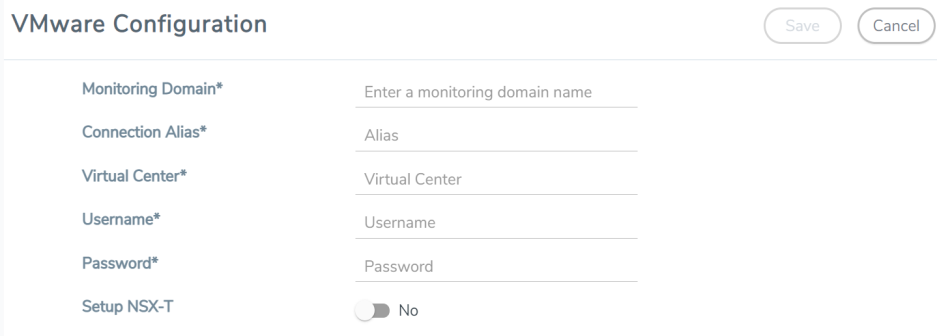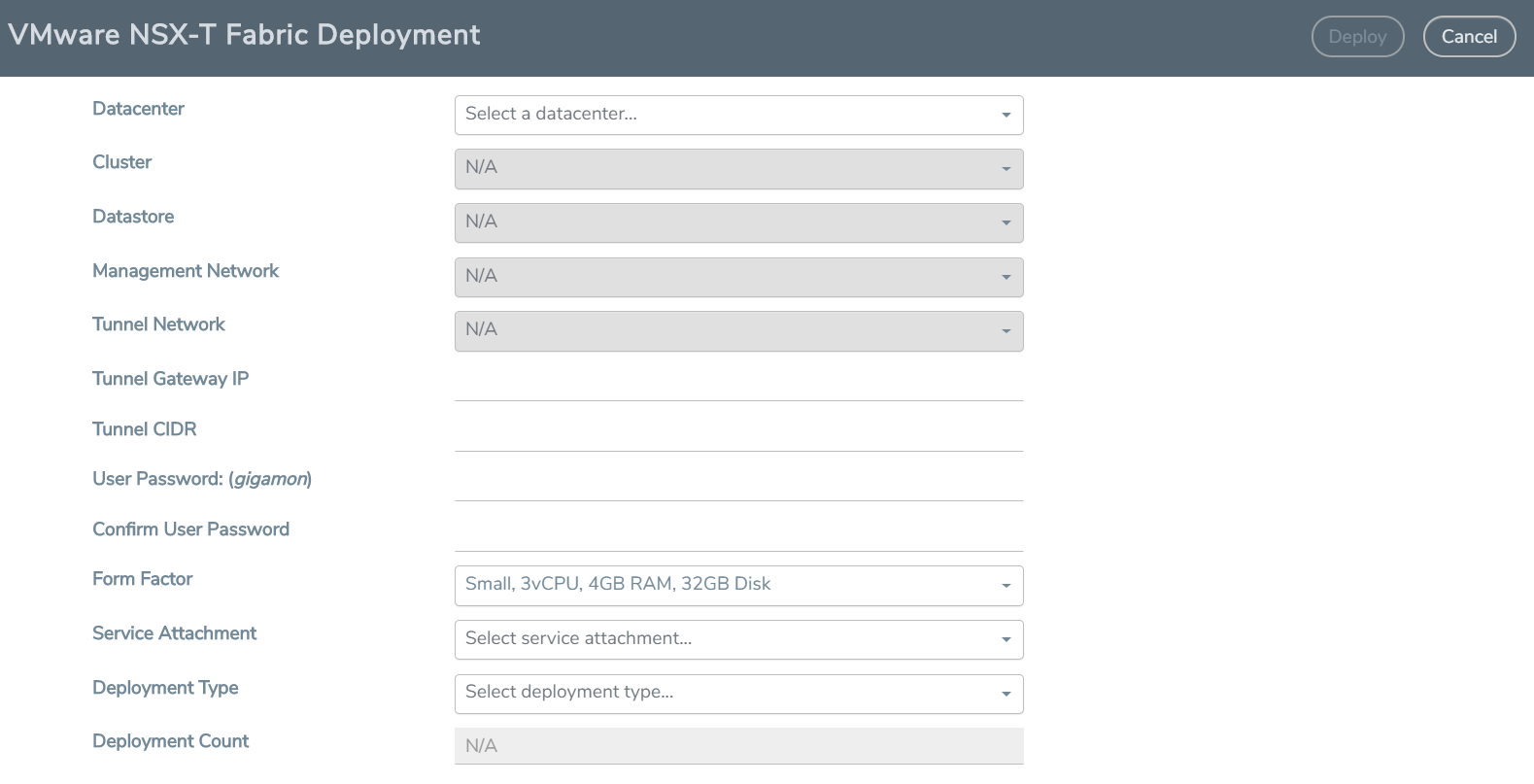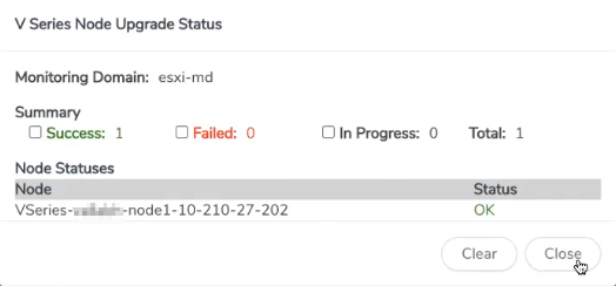Step 3: Deploy V Series nodes on VMware NSX-T
This section provides step-by-step information on how to deploy V Series Nodes.
Deploy GigaVUE V Series Nodes using GigaVUE‑FM
This chapter describes how to create a monitoring domain for deploying V Series node in VMware NSX-T hosts. You must establish a connection between GigaVUE-FM and your vCenter environment before you can perform the configuration steps for V Series node. After a connection is established, GigaVUE-FM launches the configuration for the V Series node.
Refer to the following sections for details:
- Connect to VMware vCenter
- Deploy V Series fabric on VMware NSX-T
- Upgrade V Series Node in GigaVUE-FM
Connect to VMware vCenter
To configure VMware vCenter in GigaVUE-FM:
- In GigaVUE-FM, from the left navigation pane, select Inventory > VIRTUAL > VMware > Monitoring Domain. The Monitoring Domain page appears.
- On the Monitoring Domain page, click New. The VMware Configuration page appears.

-
In the VMware Configuration page, enter or select the following details:
Field
Description
Monitoring Domain Name of the monitoring domain Connection Alias Name of the connection Virtual Center IP address of the vCenter Username Username of the vCenter user with admin role privilege Password vCenter password used to connect to the vCenter Setup NSX-T Enable to setup NSX-T and the fields of NSX-T to appear. Enter or select the following details for NSX-T:
- NSX-T Manager: IP address or Hostname of your VMware NSX-T.
- NSX-T Username: Username of the your NSX-T account.
- NSX-T Password: Password of the your NSX-T account.
- The NSX-T user account must have admin privileges.
- Each NSX-T manager can support a maximum of one monitoring domain.
- FM Username: Username of the your GigaVUE-FM account.
- FM Password: Password of the your GigaVUE-FM account.
- Image URL: Web server URL of the directory where V Series node OVA, VMDK, and OVF files are available. The Web Server URL must be in the follwoing format: http://<server-IP:port>/<path to where the OVF files are saved> and the port can be any valid number. The default port number is 80.
Note: Before VMware Configuration, all the contents of the OVA file must be extracted and placed in the directory which represents the Image URL.
- Click Save and you are navigated to VMware NSX-T Fabric Deployment page.
Deploy V Series fabric on VMware NSX-T
- In the VMware NSX-T Fabric Deployment page, enter or select the following details.

Field
Description
Datacenter vCenter Data Center with the NSX-T hosts to be provisioned with V Series nodes Cluster
Cluster where you want to deploy V Series nodes Datastore
Network datastore shared among all NSX-T hosts. Management Network Management network for V Series nodes Tunnel Network
Tunnel Network for the V Series nodes Tunnel Gateway IP
IP address of the Tunnel Gateway Tunnel CIDR CIDR value of the Tunnel User Password: (gigamon)
SSH Password of the V Series node Form Factor Instance size of the V Series node Service Attachment
Service segment created on NSX-T Deployment Type
Type of V series node deployment. You can select Clustered or Host Based deployment type Deployment Count (for Clustered deployment type)
Number of V Series nodes (Service Instances) to deploy - Click Deploy. After the V series node is deployed in vCenter, it appears on the Monitoring Domain page under Fabric tab of the selected Monitoring Domain.
To view the fabric launch configuration specification of a fabric node, click on a V Series fabric node, and a quick view of the Fabric Launch Configuration appears on the Monitoring Domain page.
Upgrade V Series Node in GigaVUE-FM
Before upgrading the nodes ensure that all the current V Series nodes are of same version. To upgrade V Series Node in GigaVUE-FM:
- In GigaVUE-FM, on the left navigation pane, select Inventory > VIRTUAL > VMware > Monitoring Domain. The Monitoring Domain page appears.
- Select a monitoring domain and click Fabric. From the drop-down list, select Upgrade Fabric, the V Series Node Upgrade dialog box appears.

- Enter the Image URL of the latest V Series Node OVA image.
Note: Both the new and the current V Series nodes appears on the same monitoring domain until the new nodes replaces the current and the status changes to Ok.
- Click Upgrade.
You can view the status of the upgrade in the Status column of the Monitoring Domain page.
To view the detailed upgrade status click Upgrade in progress or Upgrade successful, the V Series Node Upgrade Status dialog box appears.
Click Clear to delete the logs of successfully upgraded nodes.
If the V Series Node Upgrade failed or interrupted for any reason, under Fabric drop-down click Continue Fabric Upgrade to continue the V Series Node upgrade process.



